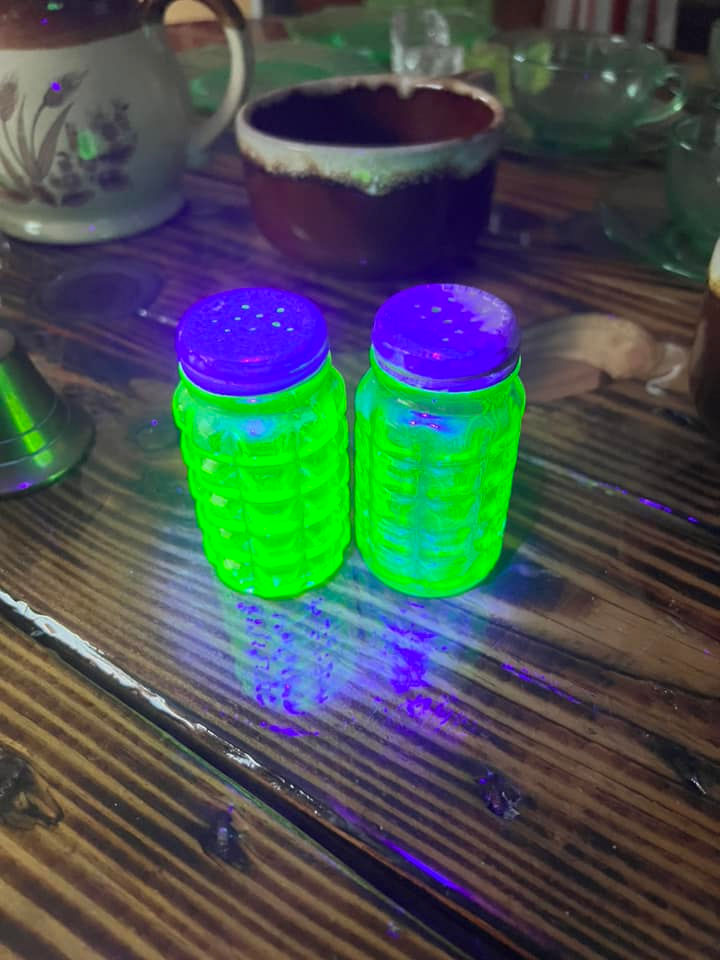You'll Know by the Glow
- David E. Stemple Jr.

- Jan 18, 2024
- 2 min read

One of our favorite items to acquire and display has to be uranium glass. This particular type of glass was usually made back in the 1930's or earlier by using radioactive uranium byproducts as a colorant in the glass and it resulted in the finished product being able to be picked up on a Gieger counter, having an eerie green/yellowish tint, and glowing bright green when exposed to UV light such as a 365 or 395 blacklight.
The glow of this and other glass paired with the use of blacklights in other aspects of antique authentication is where we take our name from (Blacklight Antiques). We all have to start somewhere, and a few pieces of uranium glass kick started our adventure into the world of antiques.
If you collect uranium glass, you'll get the usual questions of "is it safe?", "can I use it?", and "how safe is it?". While many people own and use uranium glass items without even knowing it most sources will agree it is relatively safe to own and display however eating from it is usually frowned upon due to the chance of ingesting uranium if chipped or broken and the lead and mercury used in glass production of the time. As more research was done, radioactivity became better understood, and the atomic bomb resulted in tightened regulation of radioactive material uranium glass mostly faded from production. There are still some countries that produce small quantities of uranium glass, a few higher end glass makers who continued the practice later into the 1900's, and sometimes it does make its way into the melting pot as recycled glass and result in some modern UV reactive products.
When it comes to uranium/depression glass the glow has us hooked and we'll probably be hunting, collecting, buying, and selling pieces of it for the rest of our lives.









Comments